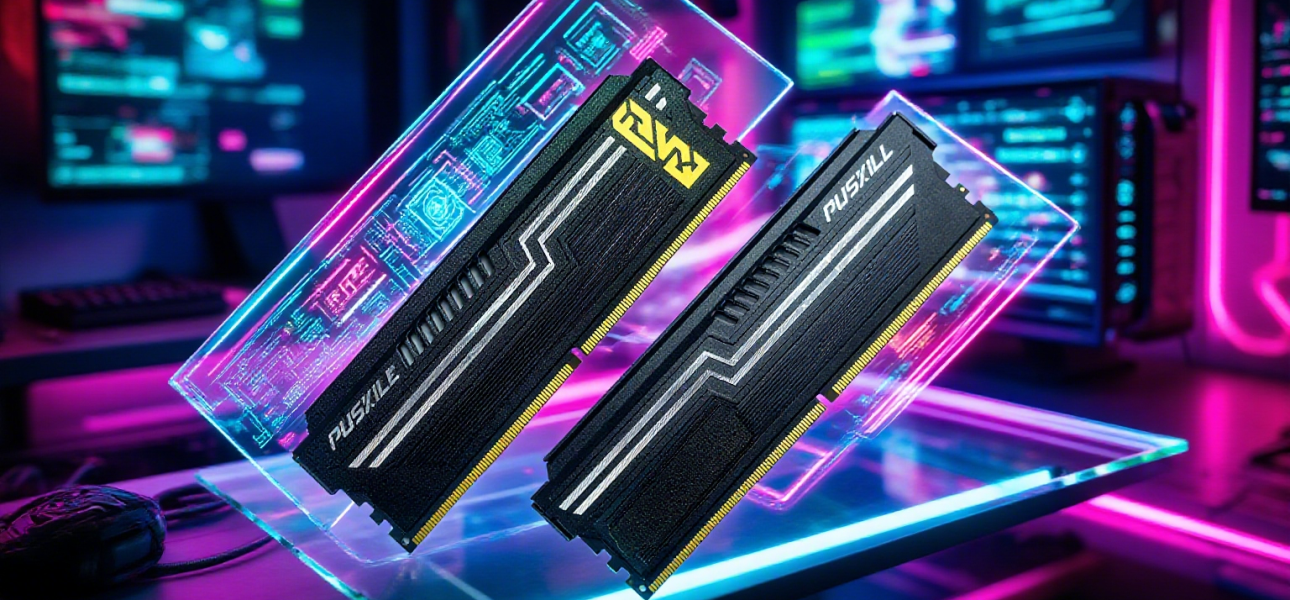How to choose?
Are you unsure whether to upgrade your computer with a RAM module or a Solid State Drive?
Although both are key components for boosting computer performance, they serve completely different purposes. Choosing the wrong one could waste your money, while the right choice can make your computer fly!
This article will explain in detail:
✅ The core differences between RAM and SSD
✅ How each affects computer performance
✅ How different users should choose (gaming, office, design)
✅ Cost-effective product recommendations for 2024
- The Core Differences Between RAM and SSD
Comparison RAM Module Solid State Drive
Function Temporarily stores active data (such as games and software) Stores files long-term (system, software, documents)
Speed Extremely fast (DDR5 up to 6400MHz) Fast (NVMe SSD up to 7000MB/s)
Data After Power Off Disappears (temporary storage) Retained (permanent storage)
Capacity Typically 8GB–128GB Typically 256GB–2TB
Upgrade Impact Enhances multitasking performance Speeds up boot and load times
Simple Explanation:
RAM is like a ‘desk’—the bigger the desk (the more memory), the more tasks you can handle at once (for example, running 100 Chrome tabs smoothly).
SSD is like a ‘filing cabinet’—the faster you can access files (the faster the SSD), the smoother it is to open software and load games.
- How do they affect computer performance?
(1) What happens when memory (RAM) is insufficient?
Computer lag: slows down or even crashes when running multiple programs.
Game frame drops: large games (like Cyberpunk 2077) require more than 16GB of memory.
Professional software errors: Photoshop and Premiere may show ‘out of memory’ warnings.
Solution: Upgrade to 16GB or 32GB (recommended mainstream choice for 2025).
(2) What happens if the SSD is slow or outdated?
Slow startup: Mechanical hard drives (HDD) take about 1 minute to boot, while SSDs only take 10 seconds.
Slow loading: Long game loading times and software startup lag.
Very slow file transfers: Copying large files can take ages.
Solution: Switch to an NVMe SSD (like a PCIe 4.0 SSD, which is six times faster than a SATA SSD).
- How should different users choose?
(1) Basic office work and web browsing
RAM: 8GB to 16GB (DDR4 is sufficient)
SSD: 512GB SATA SSD (cost-effective option)
(2) Gamers
RAM: 16GB-32GB DDR5 (high frequency, low latency)
SSD: 1TB NVMe SSD (e.g., PCIe 4.0, reduces loading times)
(3) Video Editing / 3D Design
RAM: 16GB-32GB (to prevent Premiere crashes)
SSD: 2TB NVMe SSD + high-speed external drive (media library)
(4) Enterprise Servers / Databases
RAM: ECC memory (prevents data errors)
SSD: Enterprise-grade SSD (high durability, e.g., Intel Optane)
- Cost-effective Product Recommendations for 2025
🔥 RAM Module Recommendations
Model Capacity Suitable Use Cases
PUSKILL DDR4 16GB Office / Casual Gaming
PUSKILL DDR5 32GB High-end Gaming/Design
🚀 Solid State Drive (SSD) Recommendations
Model Capacity Type Speed
PUSKILL 256GB PCIe 3.0 2500MB/s
PUSKILL 512GB PCIe 3.0 2500MB/s
PUSKILL 1TB PCIe 3.0 3000MB/s - Frequently Asked Questions
Q1: Should I upgrade RAM or SSD first?
If your computer boots slowly or lags when loading → upgrade the SSD first.
If multiple programs lag when running simultaneously → add more RAM first.
Q2: Is DDR5 memory worth buying?
For new builds in 2025, DDR5 is recommended (the future mainstream), but DDR4 still offers great value.
Q3: How long does an SSD last?
Mainstream TLC SSDs last 5–10 years (no worries for regular users).
- Conclusion + Call to Action
Memory (RAM) and Solid State Drives (SSD) greatly affect computer performance, so selecting the right one should be based on your needs.

